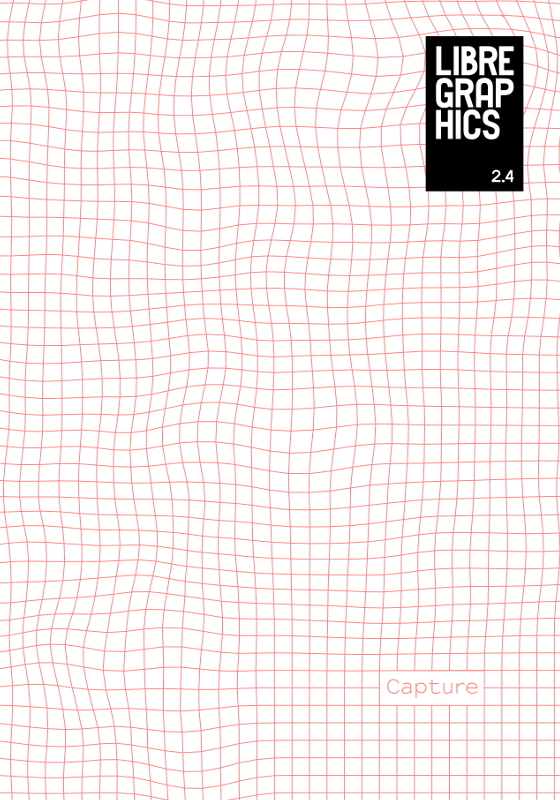KairUs (eds.): Behind the Smart World: Saving, Deleting and Resurfacing Data (2015)
Filed under book | Tags: · art, data, electronic waste, floss, free software, hacktivism, privacy

“The smart world. Created by policymakers, the advertising world, creative industries, and persuasive UX-designers that portray to us a world of shiny brand new technologies, apps that solve all our daily problems and smart cities collecting big data that will eventually solve all the problems of human kind. If we take a slightly more critical look at our smart world, though, our shiny gadgets become obsolete faster than ever, turning into toxic e-waste; our apps and smart cities have turned into an effective all-encompassing surveillance apparatus, and we have no idea who is collecting our data, who accesses it, and where it is stored. There may be issues that the smart world can solve, but at the same time, it raises new problems concerning data breaches, data privacy, data ownership and electronic waste. In this publication researchers and artists unfold some of these issues in three parts: Saving Data, Deleting Data and Resurfacing Data. Each part begins with theoretical texts that address some of the concerns, followed by strategies of artists and activists that expose problematic power structures.” (from the Introduction)
Essays by Fieke Jansen (Tactical Tech), Ivar Veermäe, Emilio Vavarella, Leo Selvaggio, Marloes de Valk, Research Team “Times of Waste”, Stefan Tiefengraber, Michael Sonntag; interviews with Audrey Samson and Michaela Lakova.
Edited by Linda Kronman and Andreas Zingerle (KairUs)
Publisher servus.at, Graz, 2015
Creative Commons BY-SA 4.0 International License
ISBN 9783950420005
160 pages
Review: Alessandro Ludovico (Neural).
Comment (0)Libre Graphics Magazine 2(4): Capture (2015)
Filed under magazine | Tags: · design, floss, free culture, free software, graphic design, libre graphics, software

“This issue looks at Capture, the act of encompassing, emulating and encapsulating difficult things, subtle qualities. Through a set of articles we explore capture mechanisms, memory, archiving and preservation of volatile digital information, physicality and aesthetization of data.”
With contributions by Raphäel Bastide, Antonio Roberts, Eric Schrijver, Birgit Bachler, Walter Langelaar, Stéphanie Vilayphiou, Scandinavian Institute for Computational Vandalism, Sebastian Schmieg, Kenneth Goldsmith, Robert M Ochshorn, Jessica Fenlon, Anna Carreras, Carles Domènech and Mariona Roca.
Edited by Ana Isabel Carvalho, ginger coons and Ricardo Lafuente
Publisher ginger coons, Dec 2015
Creative Commons Attribution-Share Alike license
ISSN 1925-1416
50 pages
PDF (low res, 25 MB)
PDF (hi-res, 140 MB)
Source files
Alexandre Leray, Stéphanie Vilayphiou (eds.): Considering Your Tools: A Reader for Designers and Developers (2013)
Filed under book | Tags: · collaboration, design, floss, free software, graphic design, interface, libre graphics, software, typography

“A teaching tool that makes the research accessible to design students and young professionals. This reader will provide them with accessible theory so that they can put the radical changes that are taking place in their profession, into perspective.”
“Today’s creation largely depends on digital tools. Far from being a neutral means to an artistic achievement, those tools are actually opinionated: they carry values and are full of conventions about the way things “ought” to be done. To us, a greater awareness of the role of digital tools is—if important to everybody—crucial in the education of artists and designers. Instead of means, the soft- and hardware tools can become partners to consciously think and converse with, to question and interrogate and to clash with. And because (visual) creation is so tightly coupled with technological development, a larger awareness of these tools can help one speculate about future practices and invent the tools to support them.
Contrary to other contemporary fields of creation, there is little literature on these questions in the sphere of graphic design. This is why we felt it was important to bring together texts and showcases on this topic into one comprehensive corpus: a tool to think about tools.
This publication contains newly commissioned, translated and re-issued texts, distributed over 5 chapters: Discrete Gestures is about how our body is informed by our digital tools; Reading Interfaces takes on different approaches to computer literacy; The Making of the Standards is about the social and technical processes behind the elaboration of norms; Myriadic Composition Tools tackles the question of software as a cultural object through the lens of digital typography; Finally, Shaping Processes discusses methodologies for open and critical collective practices. For each chapter, a short note problematize the questions behind the texts.”
With texts by Isabelle Stengers (0); Gerrit Noordzij, William A. Dwiggins, Evan Roth et al., Donald E. Knuth, Vilém Flusser, Friedrich A. Kittler, George Francis, Pierre Huyghebaert (1); Florian Cramer, Alexandre Leray and Stéphanie Vilayphiou, Olia Lialina, Lev Manovich (2); Denis Jacquerye, Unicode Inc., Anthony Froshaug, Open Source Publishing, Henri de Montrond, Martin Arnaud, Mark Pilgrim, Mailing list www-talk, Eric Schrijver (3); Maurice Girod, Robin Kinross, Femke Snelting and Alexandre Leray, Jacques André et al. (4); Christopher M. Kelty, Matthew Fuller, and Aitor Méndez (5).
Co-editors: Nicolas Malevé, Yvan Monroy Lopez, Lilly Nguyen, Camille Pageard, and Eric Schrijver
Publisher Libre Graphics Research Group, May 2013
Various licenses
For more on libre graphics, see Monoskop wiki.
Comment (0)
